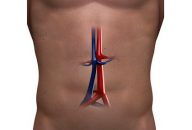Is the Obesity Epidemic Putting Patients’ and Physicians’ Health at Risk? In addition to the obvious negative effect on patients, obesity can also affect Interventional Cardiologists’ health, seeing as it involves increased exposure to radiation. Operators are clearly and increasingly exposed to radiation as patient body mass index (BMI) increases. Radiation exposure might be…
These Were the Most Relevant Article of 2018 in the Field of Coronary Diseases
1- The CULPRIT-SHOCK Study Is Finally Published in NEJM and It Is Bound to Change Guidelines During SOLACI’s coverage of the TCT 2017 Congress in Denver, Colorado, we already mentioned some of the outcomes of this study that has arrived to revolutionize clinical practice, given the differences between its results and those of the classic…
Left Main PCI Technique Could Change DAPT Duration
Up to 20% of patients undergoing left main PCI require a 2-stent technique, and this number should most likely grow after the DKCRUSH-V outcomes. However, this study contradicts the DKCRUSH-V and brings us back to “the simpler the better”, since patients undergoing 1 stent left main PCI presented less revascularization and less target vessel failure…
The 10 most consulted articles at SOLACI during 2018
1- New High Blood Pressure Guidelines The wait is finally over: the high blood pressure guidelines that have been in the works for the past 3 years saw the light of day at the American Heart Association (AHA) 2017 Scientific Sessions. Read more 2- The 10 Commandments of ESC’s New STEMI Guidelines The authors…
In Diabetics with Multivessel Disease SYNTAX Score Calculations Are Redundant
In diabetic patients with multivessel disease, anatomical complexity assessed by SYNTAX score is an independent predictor of combined events only por PCI patients, and has absolutely no consequence for surgery. The score should not be used to decide on a revascularization strategy. If the patient is diabetic and has multivessel disease, they simply ought to…
Acute Coronary Syndromes After TAVR: Frequent and Not All Undergo Coronary Angiography
Approximately 10% of patients who undergo transcatheter aortic valve replacement (TAVR) are readmitted for an acute coronary syndrome after a mean follow-up of 25 months. Male sex, prior coronary artery disease, and (surprisingly and hard to explain) nontransfemoral approach were independent predictors of acute coronary syndrome after TAVR, an event associated with high midterm mortality. While…
The 10 Most Read Articles of December
1- Everolimus-Eluting Stents Finally Have a Rival and Not Just a “Non-Inferior” Stent In this large randomized trial, there were significant differences as regards both target-lesion failure and target-vessel-related infarction, which persisted through a 2-year follow-up and favored treatment with an ultrathin-strut bioresorbable-polymer sirolimus-eluting stent (Orsiro) compared with the gold standard, a durable-polymer everolimus-eluting stent…
Radial Access Is Always Preferred, Even for Treatment of the Left Main Coronary Artery
The potential need for a 7-Fr guidewire, the use of several coronary guidewires and/or a kissing balloon, and the requirement of indispensable monitoring by intravascular ultrasound (IVUS) have been used by some interventional cardiologists as excuses to resist radial access. In that sense, left main coronary artery angioplasty was the last stand of femoral access.…
Everolimus-Eluting Stents Finally Have a Rival and Not Just a “Non-Inferior” Stent
In this large randomized trial, there were significant differences as regards both target-lesion failure and target-vessel-related infarction, which persisted through a 2-year follow-up and favored treatment with an ultrathin-strut bioresorbable-polymer sirolimus-eluting stent (Orsiro) compared with the gold standard, a durable-polymer everolimus-eluting stent (Xience). Moreover, there were significantly lower rates of target lesion revascularization and late/very…
Several Features Define a Hostile Neck in AAA patients, but Only One Makes the Difference
Patients with infrarenal abdominal aortic aneurysm (AAA) and ≥ 30 mm neck diameter have 3 times higher risk of type 1A endoleak and 5 times higher risk of rupture at follow up after standard endovascular aneurysm repair (EVAR), as well as lower survival rate. This could tilt the scales against EVAR, or at best call…
Early Strut Coverage and Its Implications for Dual Antiplatelet Therapy
Optical coherence tomography (OCT)-guided drug-eluting stent implantation improves early strut coverage compared with angiography-guided angioplasty. No difference was observed in terms of strut coverage between permanent-polymer everolimus-eluting stents and bioresorbable-polymer biolimus-eluting stents. Short-term dual antiplatelet therapy may be feasible in selected patients with early strut coverage. This study sought to measure early strut coverage…










